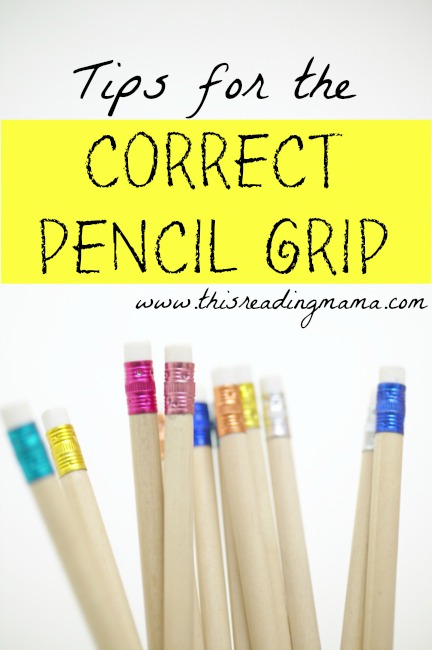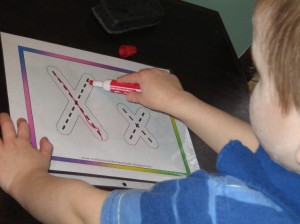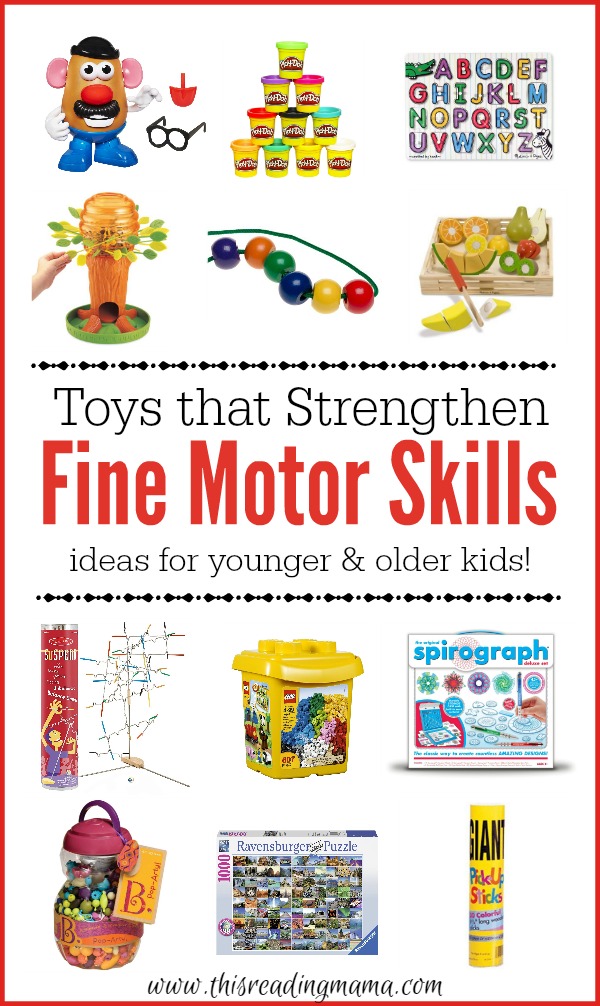Pencil Grip. This is a hot topic among OT’s, moms, and teachers alike. It’s one of those things that does need to be addressed as kids near Kindergarten age.
But… for the younger child, it can be frustrating {for them and us} if we demand they master it. This subject came to the forefront of my mind when I posted this picture of my just-turned-3-year old holding a dry erase marker.
As you can see, he is “fisting” the dry erase marker to trace the letter. A reader commented on his incorrect grip (that it made her “cringe”). Her comment made me take a step back to re-evaluate what I truly believe about literacy (which includes that pencil grip) and why I believe it.
Literacy is a Developmental Journey
The foundation of my thoughts: Literacy is a journey…a developmental journey. It will always be my stance with literacy.
And what exactly do I mean by developmental journey? Just because a child is in one stage of development, it doesn’t mean he will stay there. When encouraged and guided, the majority of children replace unconventional literacy skills with those that are conventional.
Here’s an example: At 20 months, my daughter calls me “Ma-ma.” But as she grows and is encouraged in her literacy development, she’ll replace it with “mom” or “mommy”. With encouragement, I know that my three year old may not hold the pencil correctly now (even though I model it for him), but he will eventually.
Tips for Correct Pencil Grip
An OT friend of mine shared some great information via email about pencil grip. I would like to share her information.
1. The appropriate grip is the tripod (three-finger) or quadrupod (four-finger) grasp with the last 2 fingers (ring finger and pinky) tucked into the palm.
This position is optimal because it separates the “2 sides of the hand” – the “skill side” (thumb, index and middle) that is used primarily for manipulating (tools, buttons, keys in locks, etc.) and the “stability side” which is what it says the two fingers (ring and pinky) that curl in and provide the stability/support for the skill side to do what it needs to do.
2. You can help to achieve this grasp in younger kids by giving them short (or broken) crayons that make it much harder to use a fisted, all finger or palmer grasp.
She prefers the “pip squeaks” markers over the larger markers for the same reason. Fat, primary crayons (and yes, that dry erase marker in the picture) actually foster a fisted grasp. She tells parents and whoever will listen, “Break those crayons into small pieces!”
3. A child should put his fingers where the paint and the wood meet on a pencil. The easiest trick is to make an A-OK sign with your writing hand. Open the circle and place the pencil into it so the thumb and index finger are pinching the pencil. Drop the other fingers down and into your palm – this is the “tripod grasp”.
4. The appropriate arm position is with the wrist and forearm resting on the table (not elevated above it).
If your child is young and you have cringed at his pencil grip, I would suggest to you: consider your child’s development. Is he actually ready to do it or does he just need time to develop, explore, and “play” with writing so he can fall in love with it when he’s older?
You Might Like our list of Toys That Strengthen Fine Motor Skills!
Enjoy teaching!
~Becky



Oh, I completely agree. I love the OK sign trick, that is so easy for parents and teachers to understand. Yes, toss fat crayons out! Thank you, Carolyn
I would much rather see the above grip, with index finger in fairly good position, than a child having 3 or 4 fingers on top of the marker with the pinkie finger and thumb being lined up. That is very difficult to correct. I have found that if kids enter kindergarten with a non-traditional grip, it is usually not fixable unless the parents are willing to work with you…
I always told my little ones to pinch it and then rest it. Pinch with index and thumb. Rest on hand and middle finger.